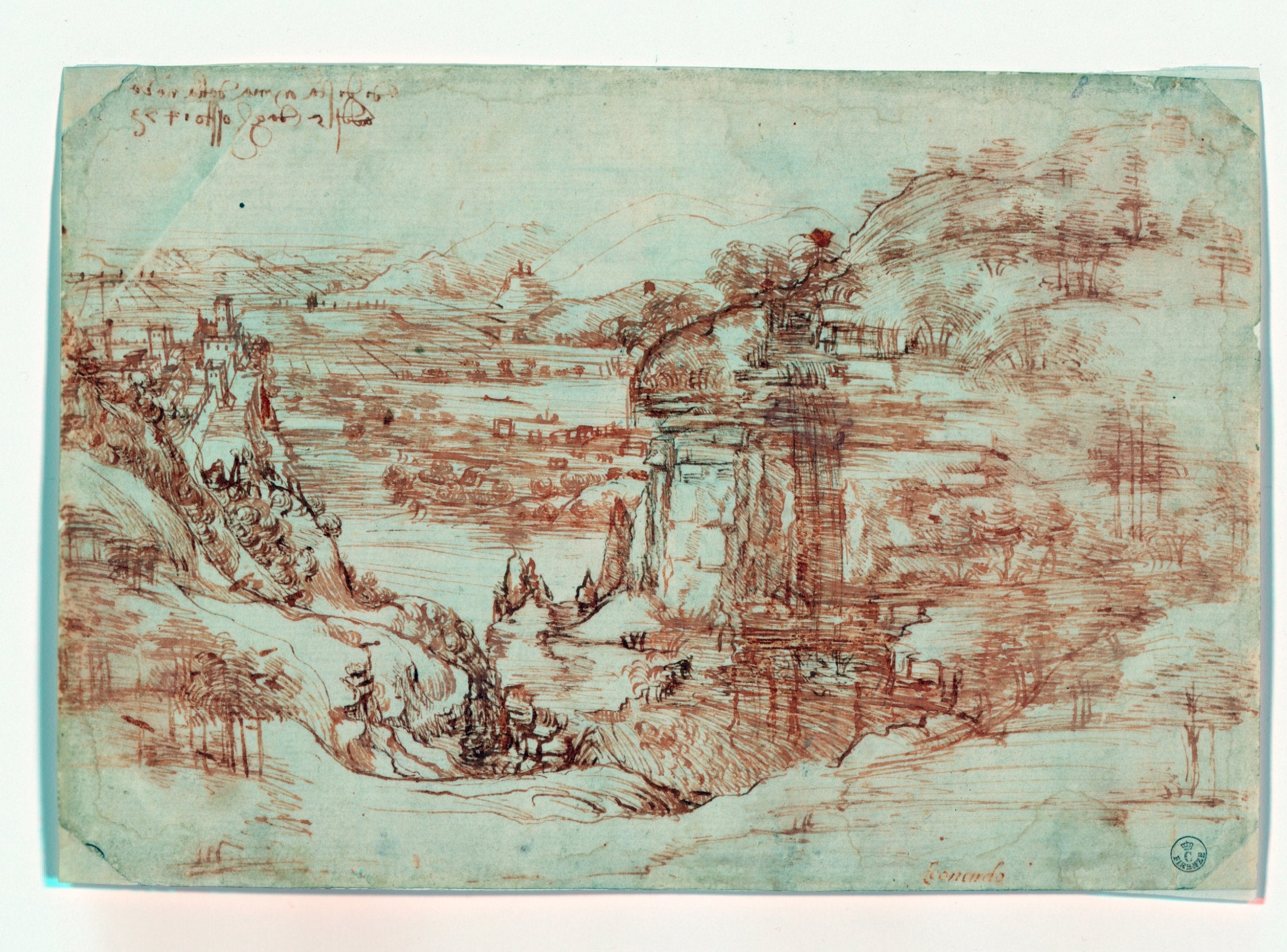Leonardo Da Vinci ‘could write, draw and paint with both hands’, experts claim
Comparison of unusual ‘mirror writing’ used by famously left-handed artist with his conventional writing reveals he was ambidextrous, gallery says

Your support helps us to tell the story
From reproductive rights to climate change to Big Tech, The Independent is on the ground when the story is developing. Whether it's investigating the financials of Elon Musk's pro-Trump PAC or producing our latest documentary, 'The A Word', which shines a light on the American women fighting for reproductive rights, we know how important it is to parse out the facts from the messaging.
At such a critical moment in US history, we need reporters on the ground. Your donation allows us to keep sending journalists to speak to both sides of the story.
The Independent is trusted by Americans across the entire political spectrum. And unlike many other quality news outlets, we choose not to lock Americans out of our reporting and analysis with paywalls. We believe quality journalism should be available to everyone, paid for by those who can afford it.
Your support makes all the difference.It has long been suspected that Leonardo Da Vinci was ambidextrous, enabling him to write, draw and paint with both his right and left hands, but researchers at the Uffizi Gallery in Florence now believe they have found the evidence that proves the theory.
The research team completed a detailed study of a drawing of the Arno River the artist completed when he was 21, known simply as Landscape (8P), which is thought to be his earliest surviving work.
It shows the river, which flows through Florence, with tall cliffs in the foreground and the castle of Montelupo in the background. But it was two inscriptions which confirmed his abilities.
Da Vinci was self-taught and famously did most of his painting and drawing with his left hand.
He is also known for his unusual “mirror writing” and he wrote most of his personal notes this way. One theory is he cultivated this approach to avoid smudging the ink, as he wrote with his left hand from right to left.
On the landscape drawing, completed in 1473, an inscription on the front is written in this way – backwards. But there is also another inscription on the back written in the conventional left-to right style.
The researchers said both inscriptions were done by the artist who “used his left hand to write the inscription in ‘mirror writing’ on the front, while he used his right hand to pen the inscription on the back in ordinary writing.”
“The Opificio delle Pietre Dure (public institute of cultural heritage) in Florence has found definite evidence of this unique characteristic thanks to a survey on the Landscape owned by the Uffizi Galleries,” the gallery said in a statement.
“A comparison between the two inscriptions provides us with the confirmation of Leonardo’s ambidexterity. First of all, they are both autograph inscriptions (as are the sketches of a head and a human figure on the back of the sheet) because they are written with the same ink he also used to draw most of the Landscape, this being the outcome borne out by an accurate calligraphic survey on the two inscriptions and many other autograph texts by Leonardo.
“All in all, a combined study of the materials used, of the typical features of his writing and a comparison between different documents has shown that the artist presumably used his left hand to write the front inscription in ‘mirror writing’, while he used his right one to write the back inscription ordinarily.”
The statement added: “Both forms of writing, while displaying a certain number of differences due to the use of different hands, share numerous key features that unquestionably display Leonardo’s unique style.”
“Leonardo was born left-handed but he was ‘re-educated’ at a very early age to use the right hand,” art historian Cecilia Frosinini told the AFP news agency.
“From an observation of his handwriting, including the inscriptions on this drawing, it is clear that his writing as a right-hander was both cultivated and well-formed,” she said.
“Leonardo was eminently capable of using his right hand... Our hypothesis is that the idea came to him from his observation of the writing in reverse on the tracing paper that he used for his drawings after turning them over.”
The research on the picture was carried out ahead of the drawing’s return to Vinci, that is, Leonardo’s birthplace, on 15 April, after more than 500 years.
The artwork will be on display in “Leonardo da Vinci: The Source of Genius” exhibition held in the town’s castle to mark 500 years since his death.
Join our commenting forum
Join thought-provoking conversations, follow other Independent readers and see their replies
Comments